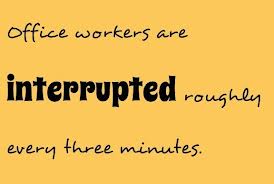Too much to do is a common problem for today’s working women and men, especially those involved in management and knowledge occupations. Time management is crucial for these professionals! (Examples of knowledge occupations: Managers, Programmers, architects, CEOs, healthcare & support, and so on.)

If having too much on your plate is getting discouraging or frustrating, trying a few time management strategies I explore in the article will provide relief.
I worked with a company and the 2 top administrators, a man and a woman, both felt overwhelmed by all the tasks on their plates. I posed a few exploratory questions to ’Jake’ and learned his schedule was completely overbooked.
“How about delegating some of your tasks to other people here?” I asked.
In this case, both admins said No, it would not be appropriate to delegate several of his responsibilities to others in the company. They felt those people already had enough on their plates.
So, what is left? Any other strategies we can try for someone with too much on their plate?
Well, like Mom always said, you’ve got to clean your plate! And I mean that literally.
It’s time to create some white space.
It’s important to recognize, no matter who you are or what your job is, that things will come up during the day and you need to plan room for them in your schedule.
The best time managers have unstructured time planned into their day.
The only way to do this is by creating white space into every day.
And the way that works best is if you have a good handle on how long your planned goals for the day will take. That leads us to the first way to reduce stress: Planning.
Step 1: Estimate How Long your Tasks will take
Many time coaches call this time estimating. It’s something I teach in my time management seminar and in private time coaching sessions. A simple but effective concept, which you can do by timing how long different, often repeated tasks take you. Like creating an agenda for an upcoming staff meeting, calls to clients, following up on a lead, or tracking numbers for last week, for example.
How will time estimating help you be realistic about what you can accomplish in a day?
How will this, in turn, decrease stress?
Step 2: Plan for Interruptions and Crises
It is helpful to track how much time each day the interruptions and crises take. Try tracking these for a week or two, then average it. While you’re at it, observe what time of day have the most interruptions. Then you can plan for these disruptions and a lot of the guesswork will be gone. You’ll have a good idea how many interruptions come and also, what time of day they tend to happen.
Can you see how this would be helpful to you? Try this strategy of actually scheduling enough unstructured hours into your day so that when emergencies come up, you already have time planned and can take it all in stride.
I guarantee your level of stress will decrease!
Step 3: Create an Opportunity List
And one other thing you may be wondering: what happens if I don’t get the amount of interruptions I planned for? This is a good situation to be in!
In that case, planning a list of other things you’d LIKE to get done that week would be handy. I call this an opportunity list.
- List tasks or small steps in a project that you’d like to fit in.
- Then, in the empty left-hand column, estimate how long each of these tasks might take you.
- When a window of time opens up, say you have 15 minutes before your next meeting, plug in one of the 15 minute tasks.
We all know there is no shortage of things to do. That’s why you’re reading this, yes? So, here’s a challenge for you: Start adding more white space to your day; at first, add 30 minutes, then an hour. Gradually increase it. Remember white space does not have to be one block of hours, you can disperse it throughout the day.
Let me know how this helped you! Once you’ve tried these strategies, reach out to me on FB or Instagram.
Or comment below. Thanks!
RESOURCES: https://jkglei.com/white-space/ Why you need white space in your daily routine by Jocelyn Glei









